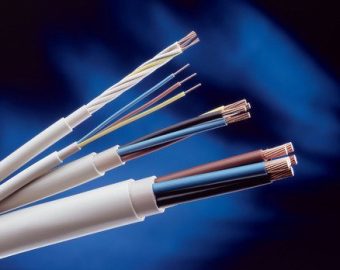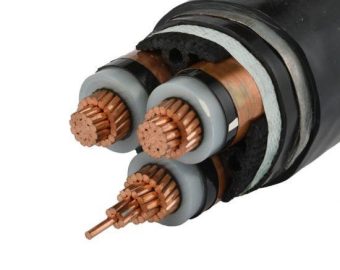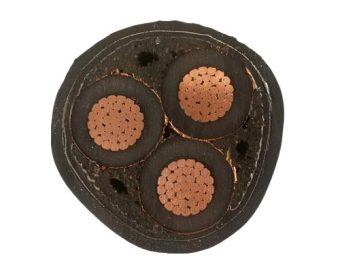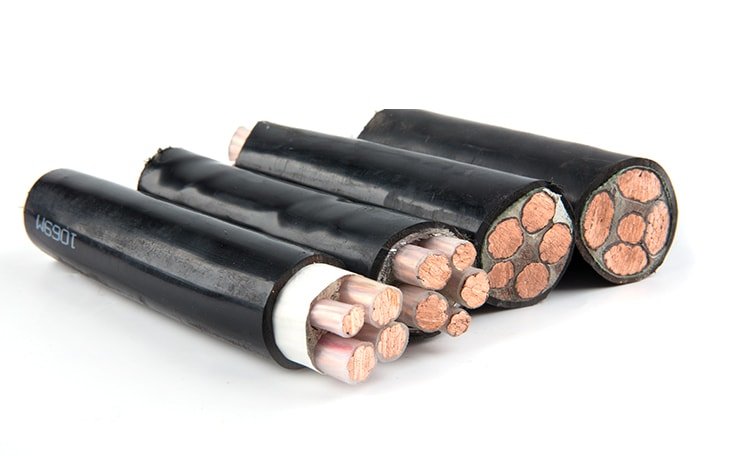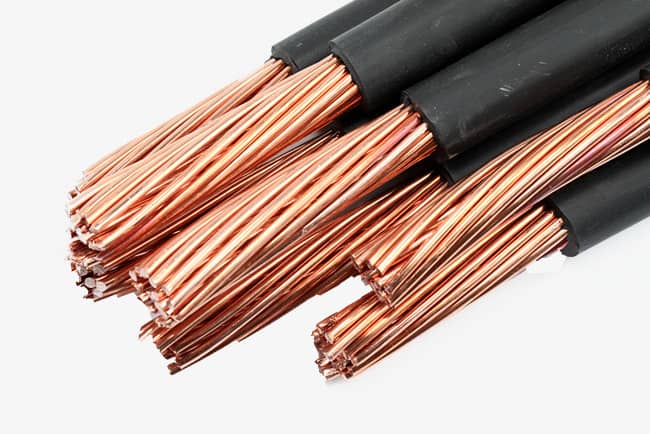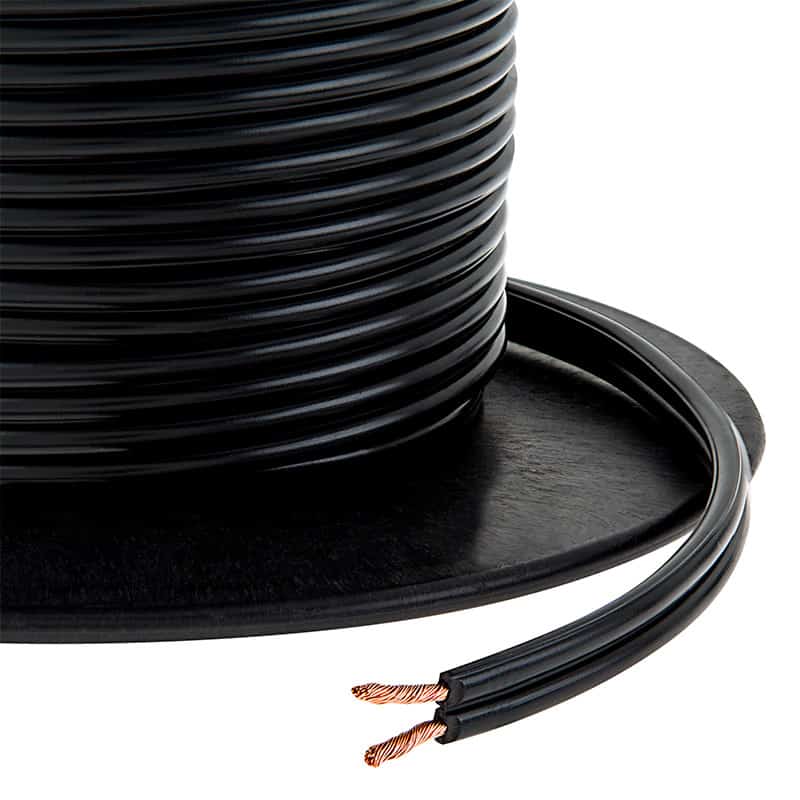Low Voltage Cable
- According to IEC 60502-1, GB
- XLPE Insulation, PVC and LSZH Sheath
- Approved by IEC, ISO, BV, SGS
- Large stock low voltage power cables with different sizes
- Related Voltage 0.6/1KV
1. What are Low Voltage Cables?
Low-voltage cable refers to electrical wires and trimmings used in applications that require less infrastructure—this includes phones, security lines, fire alarms, intercoms, and the internet.

Leading Cable and Wire Manufacturer-ZW Electrical Wire According to IEC 60502-1, GB Class 6 Copper Conductor Approved by IEC, GB Temperature Range: -20°C to +70°C Nominal
The safety, dependability, and speed with which a company’s activities are carried out are all influenced by the installation of low-voltage cabling.
Insulating and shielding low voltage cable substances used in these cable types comprise Low Voltage XLPE cable, PVC, LSF/LSOH, and elastomer compounds.
Steel (or aluminum for single-core cables) wires or tapes may be applied under the outer sheath, providing additional mechanical protection. It is essential you know the types of lines available.
Figure 1: Low Voltage Cables
Here are the types of Low Voltage Cables:
- Alternating Current (AC)
The periodic change of direction in the wire that causes the current to reverse its route characterizes this current type. AC is a safe solution for electrical demands in both households and businesses.
- Direct Current (DC)
This current transports electricity in a straight line. The most typical kind of battery is DC.DC works for smaller projects.
We are reputable low voltage cable manufacturers for all your needs.
2. How Does Low Voltage Work?
Electrical equipment with a Low voltage cable rating of 50 to 1000V for alternating current and 75 to 1500V for direct current is connected using power low voltage cables (LV cables). As a result, they are free from electrical stress.
Wiring using low voltage wire needs the knowledge and experience of a qualified technician who excels in installation. of a building’s whole network of common voltage wire. You are confident that low voltage life expectancy is available.
In some circumstances, the cabling infrastructure will need to be structured to support low voltage size. Low voltage wire has several advantages, including being used for a wide range of applications in almost any environment style of structure.
Some of the most common low-voltage uses include:
Telephones are necessary in both multi-phone systems and computer networks. They are still important in every organization and home office. In a lot of cases, the wiring comprises settings based on fiber optics, Ethernet, or Wi-Fi.
Wi-Fi is available on almost every gadget in your office these days. Wi-Fi networks settings use low-voltage electrical wire.
The demand for lines in commercial structures is significant. Installing low voltage cable is becoming more advantageous and cost-effective. Low voltage wire gauge is used as Video and audio devices are increasingly being used by enterprises and subscribe to cable television.
Before installing cable in your facility, choose the appropriate Low voltage cable size that will suit your needs. ZW Cables we are a leading low voltage cable company. Also, we are also credible 10 gauge low voltage cable distributors.
Figure 2: Low Voltage Wire Gauge
Surveillance and security. When it comes to devising a safety or monitoring strategy, selecting the correct low voltage cable specifications is crucial—wiring connections to video cameras, motion sensors, and alarms are put in certain places. for example. Also, choose the proper low voltage lighting cable for security reasons.
Figure 3: Low Voltage Lighting Cables
3. Which material is Used for Low voltage cables-XLPE and PVC?
The qualities of the insulation material you use play a significant role in the successful operation. As a result, selecting the appropriate insulating material for lines is critical. Here are the properties you should look for:
Properties of insulating Material
- Low conduction loss due to high insulating resistance.
- High dielectric strength to prevent the collapse of the cable.
- Excellent mechanical strength to withstand industrial line handling.
- It should be non-hygroscopic, which means it shouldn’t take moisture from the air or the soil.
- Non-inflammable.
We are going to look at XLPE and PVC.
XLPE
Cross-linked polyethylene cable is known as XLPE cable. Polyethylene plastic is excellent for making hydronic tubing. The shape memory properties of XLPE are due to its 3D molecular bond structure. In a nutshell, Low Voltage XLPE cable is crucial in industries where wire and cable expose to:
- Extremely high-temperature conditions
- Electrical applications involving high voltage
- Stress and abrasion
- Liquids such as water
- Dangerous chemicals
Plumbing, mining, and numerous electrical applications can all benefit from XLPE cable. Cross-linked polyethylene cables are also used in the chemical and commercial, and residential heating industries.
Pvc (Poly Vinyl Chloride)
The insulating material is made of synthetic materials. It’s created using acetylene polymerization. The insulating material is made of synthetic materials. It’s created using white powder. This insulating material is mixed with plasticizers, which are liquids with a high boiling point, to make it suitable for Low voltage wire insulation.
It has high-temperature ranges. The plasticizer turns the substance into a jelly and makes it plastic. Over a wide temperature range, polyvinyl chloride provides excellent insulating resistance, good dielectric strength, and mechanical durability. It is oxygen inert and almost inert to several alkaline and acids.
PVC insulated cables are commonly used for low voltage lighting cables for home lights and electricity installations because of their mechanical qualities. (i.e., elasticity).
Differences between XLPE and PVC
The critical distinction between XLPE and PVC is that XLPE can be utilized in high and low-stress applications. Its structure resists abrasion, tension, and other forms of wear and tear. Because PVC insulation can’t bear as much pressure, it’s only suitable for low-tension applications.
Other notable differences are:
- XLPE insulation has a more extended low voltage cable life expectancy PVC insulation.
- XLPE is more environmentally friendly because it does not contain chloride.
XLPE can tolerate high temperatures with Insulation.
- More moisture resistance is provided by cross-linked polyethylene.
4. How is Low Voltage Cable Tested?
I know this comes to your mind; why is it necessary to test cables? Cable testing is necessary to reduce testing time. It is done to make sure that:
- Conformity of the cable
- Quality of cabling
- The functionality of the cable
You may have experienced cable failure, and before long, it becomes a problem. A visual inspection of all of your facility’s wires is a fantastic approach to detecting problems before creating downtime. Cables are examined for corrosion on the copper, insulation splits, moisture on the wires, and various other signs of cable deterioration.
Test Conductor Resistance
Copper or aluminum conductors’ DC resistance is determined using this test. The resistance of a conductor indicates how easily it permits electricity to flow in it. The size and construction of a conductor have an impact on its resistance. Environmental factors such as temperature and resistivity also affect resistance. It’s usually measured in ohms per kilometer.
This test will employ either the Kelvin Double Bridge with a 0.2 percent accuracy or the Wheatstone Bridge with a 0.5 percent accuracy.
The test specimen is chosen as shown below.
- Drum length of 1 m, all solid circular conductor
- Solid conductors up to and including 25 mm2 size, stranded or sector formed Drum length of 5 m
- Drum length of 10 m for all stranded or sector-shaped solid conductors is more significant than 25 mm2.
- All circular conductors are solid. 1-meter drum length
- Solid conductors up to and including 25 mm2 size, stranded or sector formed Drum length of 5 m
- Drum length of 10 m for all stranded or sector-shaped solid conductors is more significant than 25 mm2.
Insulation Thickness
The total resistance between any two sites separated by electrical Insulation is measured by an insulation resistance (IR) test. As a result, the test determines how effective the dielectric (Insulation) is at resisting current flow. Such tests are essential for determining the insulation quality of a product.
Perform tests at regular intervals to detect potential insulation problems and avoid user mishaps or costly product repairs.
Sheath Thickness
Sheath Resistance Testing is an essential onsite diagnostic procedure for detecting potential cable failures. It’s worth note that the aim of this exercise is to demonstrate the cable sheath’s integrity; outside sheathing serves to shield the final cable from the surroundings. Thus the label “sheath resistance testing” is a bit misleading.
Network Rail frequently uses sheath resistance testing to preserve the sheath integrity of their graphite coated trackside NR/PS/ELP/00008 low voltage heating wires. The graphite coating acts as a semi-conductive layer through which the potential current can pass to a predetermined length to execute the test.
Sheath resistance measurements by IEC 60364-6 should yield the following results:
- Low voltage of 0.5 M (test voltage 250Vdc)
- M (500 volts) (test voltage 500Vdc)
- M at 500V or higher (test voltage 1000Vdc)
5. How to Burry Low Voltage Cable?
Do you want to enjoy the beauty of your landscape? Install outdoor low voltage cable. For outdoor lighting, you can use 2- core low voltage outdoor cable. Having learned about the features and characteristics of Low Voltage Lighting, you can bury them. But before that:
You should choose the right equipment, such as the shielded low voltage cable and wire them accurately. When ready, you can connect all your cables and bury them in the ground perfectly. The best way to do this is by digging 6 inches deep into the ground. Another good option is by digging angled trenches which allows quick sealing.
I recommend that a qualified electrician do any fitting or installation, do not risk installing yourself if you are unsure.
There is some vital information about Low Voltage cables. Kindly leave your comment in the comment section immediately.

